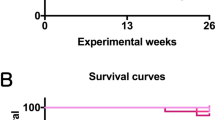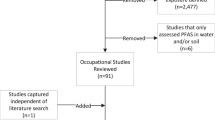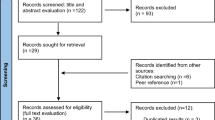Abstract
We address here the importance of epidemiological evidence in risk assessment and decision-making in Europe. To illustrate this, titanium dioxide (TiO2) was used as a model compound. TiO2 is widely used as an odorless white pigment and opacifying agent. A recent systematic review assessing the weight of evidence on the relationship between exposure to TiO2 (all forms) and cancer in humans questions the assumptions that TiO2 is an inert material of low toxicity. Based on this new data, France submitted a proposal to classify TiO2 as a possible human carcinogen under the European regulation. The European Chemicals Agency Risk assessment committee concluded that TiO2 (all forms) warrants a classification as a suspected human carcinogen via inhalation (Category-2) under the CLP regulation (for Classification, Labeling and Packaging of chemicals). No considerations was given to TiO2 particle size, which may affect human health effects. Consequently, further epidemiological studies are needed to assess possible associations between different physical–chemical characteristics of TiO2 exposures and their impact on human health. This would allow strengthening the evidence on which to build the most appropriate regulation and to guaranty safe use given any exposure route of any TiO2 particle shape or size.
This is a preview of subscription content, access via your institution
Access options
Subscribe to this journal
Receive 6 print issues and online access
$259.00 per year
only $43.17 per issue
Buy this article
- Purchase on Springer Link
- Instant access to full article PDF
Prices may be subject to local taxes which are calculated during checkout
Similar content being viewed by others
References
Deener K, Sacks JD, Kirrane EF, Glenn EF, Gwinn M, Bateson T, et al. Epidemiology: a foundation of environmental decision making. J Expo Sci Environ Epidemiol. 2018;28:515–21.
IARC. Titanium dioxide. IARC monographes on the evaluation of carcinogenic risk to humans: carbon black, titanium dioxide, and talc. vol. 93. Lyon: IARC; 2010. p. 194–276.
US-NIOSH. Current Intelligence Bulletin 63. Occupational exposure to titanium dioxide. Cincinnati: Department of Health and Human Services, Centers for Disease Control and Prevention, National Institute for Occupational Safety and Health; 2011. 140pp.
Grande F, Tucci P. Titanium dioxide nanoparticles: a risk for human health? Mini Rev Med Chem. 2016;16:762–9.
Baan R, Straif K, Grosse Y, Secretan B, El Ghissassi F, Cogliano V. Carcinogenicity of carbon black, titanium dioxide, and talc. Lancet Oncol. 2006;7:295–6.
ANSES. Proposal for Harmonized classification and labelling based on Regulation (EC) No. 1272/2008 (CLP regulation), Annex VI, Part 2. Substance Name: Titanium dioxide. Maisons-Alfort: ANSES (on behalf of the French MSCA); 2017.
Regulation No. 1272/2008 of the European Parliament and of the Council of 16 December 2008 on classification, labelling and packaging of substances and mixtures, amending and repealing Directives 67/548/EEC and 1999/45/EC, and amending Regulation (EC) No 1907/2006. Official J Eur Union. 2008;353:1.
Martin P, Bladier C, Meek B, Bruyere O, Feinblatt E, Touvier M, et al. Weight of evidence for hazard identification: a critical review of the literature. Environ Health Perspect. 2018;127:1–15.
OHAT. (Office of Health Assessment and Translation) Handbook for conducting a literature-based health assessment using OHAT approach for systematic review and evidence integration. Research Triangle Park, NC: OHAT; 2015.
Ellis ED, Watkins J, Tankersley W, Phillips J, Girardi D. Mortality among titanium dioxide workers at three DuPont plants. J Occup Environ Med. 2010;52:303–9.
Ellis ED, Watkins JP, Tankersley WG, Phillips JA, Girardi DJ. Occupational exposure and mortality among workers at three titanium dioxide plants. Am J Ind Med. 2013;56:282–91.
Boffetta P, Soutar A, Cherrie JW, Granath F, Andersen A, Anttila A, et al. Mortality among workers employed in the titanium dioxide production industry in Europe. Cancer Causes Control. 2004;15:697–706.
Chen JL, Fayerweather WE. Epidemiologic study of workers exposed to titanium dioxide. J Occup Med. 1988;30:937–42.
Fryzek JP, Chadda B, Marano D, White K, Schweitzer S, McLaughlin JK, et al. A cohort mortality study among titanium dioxide manufacturing workers in the United States. J Occup Environ Med. 2003;45:400–9.
Boffetta P, Gaborieau V, Nadon L, Parent MF, Weiderpass E, Siemiatycki J. Exposure to titanium dioxide and risk of lung cancer in a population-based study from Montreal. Scand J Work Environ Health. 2001;27:227–32.
Ramanakumar AV, Parent ME, Latreille B, Siemiatycki J. Risk of lung cancer following exposure to carbon black, titanium dioxide and talc: results from two case-control studies in Montreal. Int J Cancer. 2008;122:183–9.
Arrighi HM, Hertz-Picciotto I. The evolving concept of the healthy worker survivor effect. Epidemiology. 1994;5:189–96.
Richardson D, Wing S, Steenland K, McKelvey W. Time-related aspects of the healthy worker survivor effect. Ann Epidemiol. 2004;14:633–9.
ECHA. Titanium dioxide proposed to be classified as suspected of causing cancer when inhaled 2017 [updated 09.06.2017. Available from: https://echa.europa.eu/fr/-/titanium-dioxide-proposed-to-be-classified-as-suspected-of-causing-cancer-when-inhaled.
Naimi AI, Cole SR, Kennedy EH. An introduction to g methods. Int J Epidemiol. 2017;46:756–62.
Fortier I, Raina P, Van den Heuvel ER, Griffith LE, Craig C, Saliba M, et al. Maelstrom Research guidelines for rigorous retrospective data harmonization. Int J Epidemiol. 2017;46:103–5.
Grellier J, Atkinson W, Berard P, Bingham D, Birchall A, Blanchardon E, et al. Risk of lung cancer mortality in nuclear workers from internal exposure to alpha particle-emitting radionuclides. Epidemiology. 2017;28:675–84.
Guseva Canu I, Garsi JP, Caer-Lorho S, Jacob S, Collomb P, Acker A, et al. Does uranium induce circulatory diseases? First results from a French cohort of uranium workers. Occup Environ Med. 2012;69:404–9.
Zhivin S, Guseva Canu I, Davesne E, Blanchardon E, Garsi JP, Samson E, et al. Circulatory disease in French nuclear fuel cycle workers chronically exposed to uranium: a nested case-control study. Occup Environ Med. 2018;75:270–6.
Oberdorster G, Ferin J, Lehnert BE. Correlation between particle size, in vivo particle persistence, and lung injury. Environ Health Perspect. 1994;102(Suppl 5):173–9.
Borm PJ, Schins RP, Albrecht C. Inhaled particles and lung cancer, part B: paradigms and risk assessment. Int J Cancer. 2004;110:3–14.
Sager TM, Kommineni C, Castranova V. Pulmonary response to intratracheal instillation of ultrafine versus fine titanium dioxide: role of particle surface area. Part Fibre Toxicol. 2008;5:17.
Warheit DB, Reed KL, Webb TR. Pulmonary toxicity studies in rats with triethoxyoctylsilane (OTES)-coated, pigment-grade titanium dioxide particles: bridging studies to predict inhalation hazard. Exp Lung Res. 2003;29:593–606.
Xue C, Wu J, Lan F, Liu W, Yang X, Zeng F, et al. Nano titanium dioxide induces the generation of ROS and potential damage in HaCaT cells under UVA irradiation. J Nanosci Nanotechnol. 2010;10:8500–7.
Numano T, Xu J, Futakuchi M, Fukamachi K, Alexander DB, Furukawa F, et al. Comparative study of toxic effects of anatase and rutile type nanosized titanium dioxide particles in vivo and in vitro. Asian Pac J Cancer Prev. 2014;15:929–35.
Schulte P, Leso V, Niang M, Iavicoli I. Biological monitoring of workers exposed to engineered nanomaterials. Toxicology letters. 2018;298:112–24.
Guseva Canu I, Jacob S, Cardis E, Wild P, Caer S, Auriol B, et al. Uranium carcinogenicity in humans might depend on the physical and chemical nature of uranium and its isotopic composition: results from pilot epidemiological study of French nuclear workers. Cancer Causes Control. 2011;22:1563–73.
Couch JR, Petersen M, Rice C, Schubauer-Berigan MK. Development of retrospective quantitative and qualitative job-exposure matrices for exposures at a beryllium processing facility. Occup Environ Med. 2011;68:361–5.
Guseva Canu I, Faust S, Knieczak E, Carles M, Samson E, Laurier D. Estimating historic exposures at the European gaseous diffusion plants. Int J Hyg Environ Health. 2013;216:499–507.
Guseva Canu I, Schulte PA, Riediker M, Fatkhutdinova L, Bergamaschi E. Methodological, political and legal issues in the assessment of the effects of nanotechnology on human health. J Epidemiol Community Health. 2018;72:148–53.
ANSES. Toxicological Reference Value (TRV). Establishment of chronic reference value by inhalation for titanium dioxide under nanoform. Contract No.: Request No. 2017-SA-0162 “TiO2 TRV”. Maison Alfort, France: ANSES; 2018
Bermudez E, Mangum JB, Wong BA, Asgharian B, Hext PM, Warheit DB, et al. Pulmonary responses of mice, rats, and hamsters to subchronic inhalation of ultrafine titanium dioxide particles. Toxicological Sci. 2004;77:347–57.
Acknowledgements
This work was funded by the French Agency for Food, Environmental and Occupational Health & Safety (ANSES), Grant No. D 17LESCO410.
Author information
Authors and Affiliations
Corresponding author
Ethics declarations
Conflict of interest
The authors declare that they have no conflict of interest.
Additional information
Publisher’s note: Springer Nature remains neutral with regard to jurisdictional claims in published maps and institutional affiliations.
Supplementary information
Rights and permissions
About this article
Cite this article
Guseva Canu, I., Fraize-Frontier, S., Michel, C. et al. Weight of epidemiological evidence for titanium dioxide risk assessment: current state and further needs. J Expo Sci Environ Epidemiol 30, 430–435 (2020). https://doi.org/10.1038/s41370-019-0161-2
Received:
Revised:
Accepted:
Published:
Issue Date:
DOI: https://doi.org/10.1038/s41370-019-0161-2
Keywords
This article is cited by
-
Re: Weight of epidemiological evidence for titanium dioxide risk assessment: current state and further needs
Journal of Exposure Science & Environmental Epidemiology (2022)
-
Critical Review of Engineered Nanoparticles: Environmental Concentrations and Toxicity
Current Pollution Reports (2022)
-
An investigation into the architectural use of nanotechnology in the context of the titanium dioxide
Environmental Science and Pollution Research (2021)



